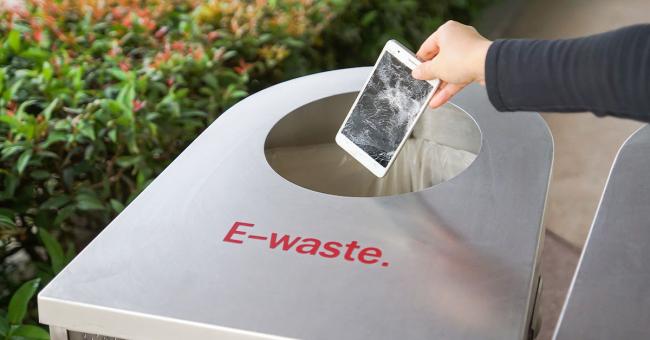5 Benefits for Manufacturers Adopting Right to Repair

At one time or another, we’ve all purchased an appliance or device that stopped working or didn’t work correctly. It could have been a lawnmower, toaster, refrigerator, car, sewing machine or garage door that stopped working, always at the most inopportune time. Chances are you knew what was wrong, something that seemed fixable if you had some help and access to the replacement parts (and tools).
Decades ago, minor repairs would not have been a problem as a family member, friend or the local 'fixer' shop would gladly tackle the challenge. They had ready access to the tools, parts and knowledge.
Fast forward to today, when appliances are more complex, full of sophisticated electronics, and not so easy to diagnose or fix without specialized knowledge. The fast pace of innovation and product evolution resulted in a 'disposable' mindset by manufacturers and consumers. Products are often not repairable or are repairable only through costly warranty and post-sale programs.
In our recent study, 61 percent of consumers annually toss out electronic devices or household appliances because they were too difficult or expensive to repair. The impact is that electronic waste, or e-waste, has become the fastest growing waste stream and is expected to reach $103 billion by 2027.
A sea change is happening, however.
Since the early 2010s, global attention has shifted from consumption to sustainability. The United Nations and its member countries adopted the 17 sustainable development goals (UN SDGs) in 2015. At the same time, millennials and Generation Z have embraced sustainability, reuse and recycling in increasing numbers. The pandemic was the consumer tipping point for widespread behavior change and broad adoption of environmental sustainability and the Right to Repair movement.
A CGS study found that 76 percent of consumers felt companies should be held accountable for positive impact, and a brand’s sustainability reputation affected the purchase decisions of 77 percent of consumers. Today, 80 percent of consumers want to repair their household appliances and electronic devices. Even the U.S. government is weighing in. In July 2021, President Biden issued Economic Order 14036, encouraging the FTC to ”issue rules against anti-competitive restrictions on using independent repair shops and doing DIY repairs on your own devices and equipment“.
The Right to Repair movement is a series of laws adopted by countries worldwide, namely the UK, EU, and the U.S. In a nutshell, the regulations require manufacturers to provide repair documentation and sell the necessary tools and OEM parts to anyone who wants them. In the EU, the legislation goes further, requiring manufacturers to ensure their products will last up to 10 years and replacement parts are available for as long.
For manufacturers, supporting Right to Repair presents both opportunities and challenges. The opportunities from Right to Repair can, over time, far exceed the costs and lost revenue of retooling products, supply chains and businesses. In fact, with some innovation this movement can open new business opportunities.
5 Big Benefits
Manufacturers that embrace Right to Repair realize five benefits:
- Increased customer satisfaction
- Stronger brand reputation for doing good
- ESG and sustainability reporting
- Improved product reliability and durability
- Leverage augmented reality, 'see what I see,' and digital twinning to help customers successfully perform repairs
The CGS study found that 80 percent of consumers would attempt a DIY repair of an electronic device or household appliance if they had easy access to replacement parts and instructions. And 46 percent would be more likely to attempt DIY repairs if brands provided support in the process; for example, by connecting with an expert using “see what I see” technology like augmented reality to guide them through repair steps.
Being able to tackle a DIY repair successfully increases customer satisfaction and brand loyalty and bolsters the manufacturer's reputation for caring about the environment and doing good. Delivering the repair tools and knowledge through multiple mediums is critical. Growing in popularity is 'See What I See' remote assistance. Forty-five percent of consumers want to use this type of remote assistance for help in setup, installation and repair, and 36 percent want to use it to diagnose or help with using their appliance.
Retooling business to conform with triple-bottom-line and environmental, social and corporate governance (ESG) reporting requirements helps manufacturers get ahead of the curve. There is a growing requirement for firms to provide ESG reports—by Federal Government contractors, financial institutions and other agencies. Having the data on the manufacturer’s impact on UN SDGs eases ESG reporting and provides answers to questions that stakeholders are raising.
While retooling manufacturing lines to build more durable products is a significant investment, it will ultimately lead to higher brand preference and new product line extensions. Instead of focusing on new models with new features, Right to Repair will enable manufacturers to understand and deliver on customer needs and desires.
While the benefits are significant, the near-term impact on manufacturers cannot be overlooked.
For decades manufacturers built their products, plants, supply chains and businesses around the concept of planned obsolescence and disposability. Redesigning products, business models and retooling manufacturing plants is costly and, for some, cost prohibitive. Additionally, stocking replacement parts for ten years is expensive and problematic. Plastic parts and electronics do not have a 10-year shelf life. They are susceptible to evaporation, oxidation and other decaying processes.
Field maintenance, after-sales service contracts and warranties contribute significantly to annual revenues for many types of manufacturers. Complying with Right to Repair reduces these revenue streams and impacts jobs. Other concerns manufacturers have with the legislation is exposing their intellectual property and proprietary manufacturing practices to competitors. It may also mean exposing customers to risks and personal harm from undertaking repairs they are not sufficiently skilled in or when not following the manufacturer’s advice and guidelines.
None of the above challenges and concerns should be made light of. One key is clear, concise, easy-to-understand consumer communication, education and how-to instructions and tools, along with explanations why some parts either cannot be repaired, or why repair should be performed by an authorized repair shop.
5 Best Practices
Manufacturers embracing this movement are adopting five best practices:
- Inform consumers on the implications and benefits of Right to Repair and how it impacts their decision-making.
- Label products with information on how to repair them and where to get additional information.
- Educate consumers on where to buy approved parts and spot parts that do not meet quality and safety standards.
- Understand consumer concerns and fears about security breaches and educate them on any internet of things (IoT) or cloud connectivity in products, what data is captured and how it is used.
- Provide an easy, cost-effective circular economy process for consumers to return parts to avoid throwing old, defective parts into the garbage.
The adage of "make it last" replaces "out with the old, in with the new." The Right to Repair movement is good for the environment, consumers and manufacturers. And it is good for the economy; it will create tens of thousands of independent technician jobs just in the U.S., fueling a $41 billion industry to double in size, or to grow even more. For more insights and details on our survey findings, download our infographic on Why Manufacturers and Consumer Goods Companies Should Care About Right to Repair.


